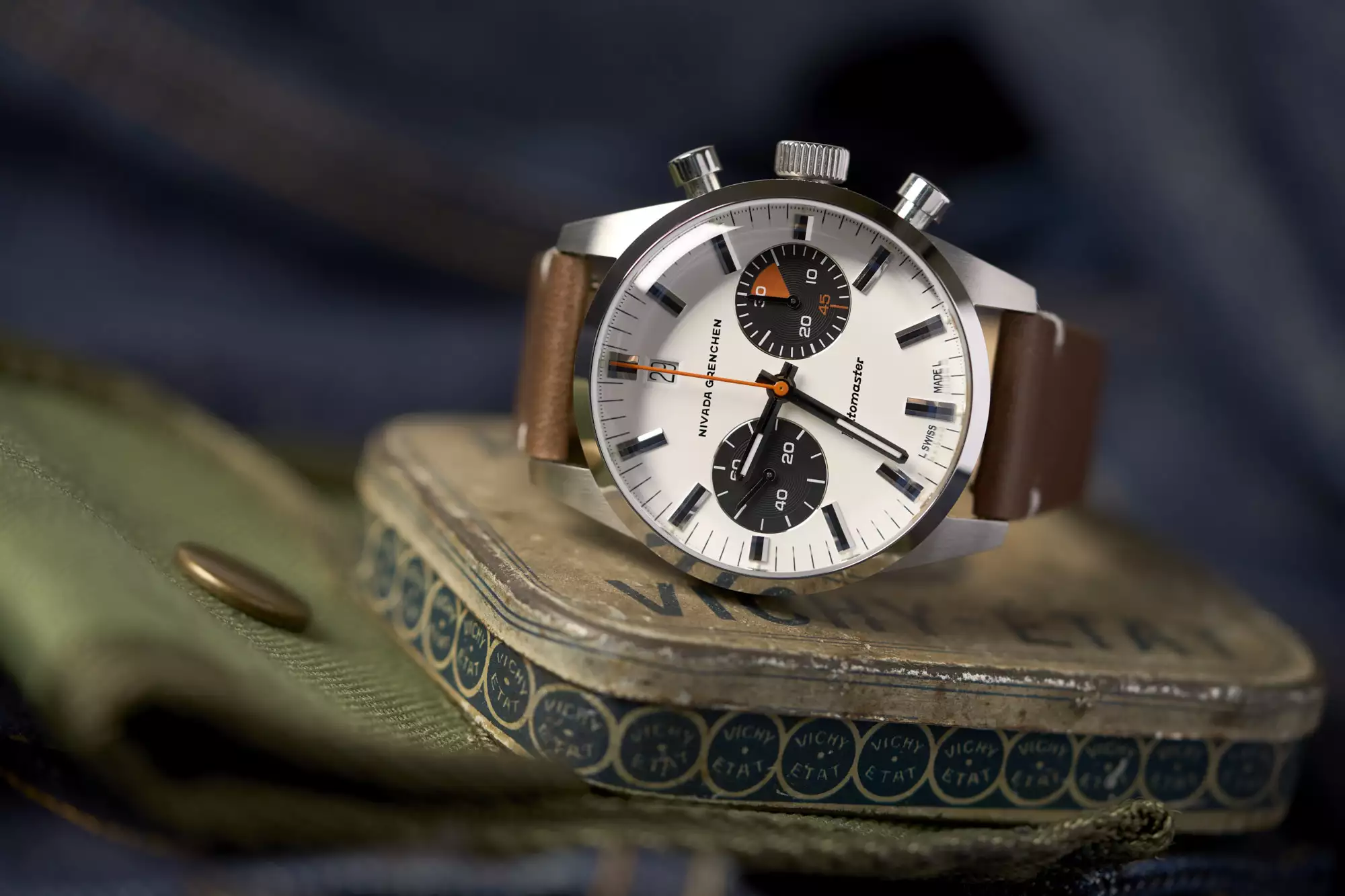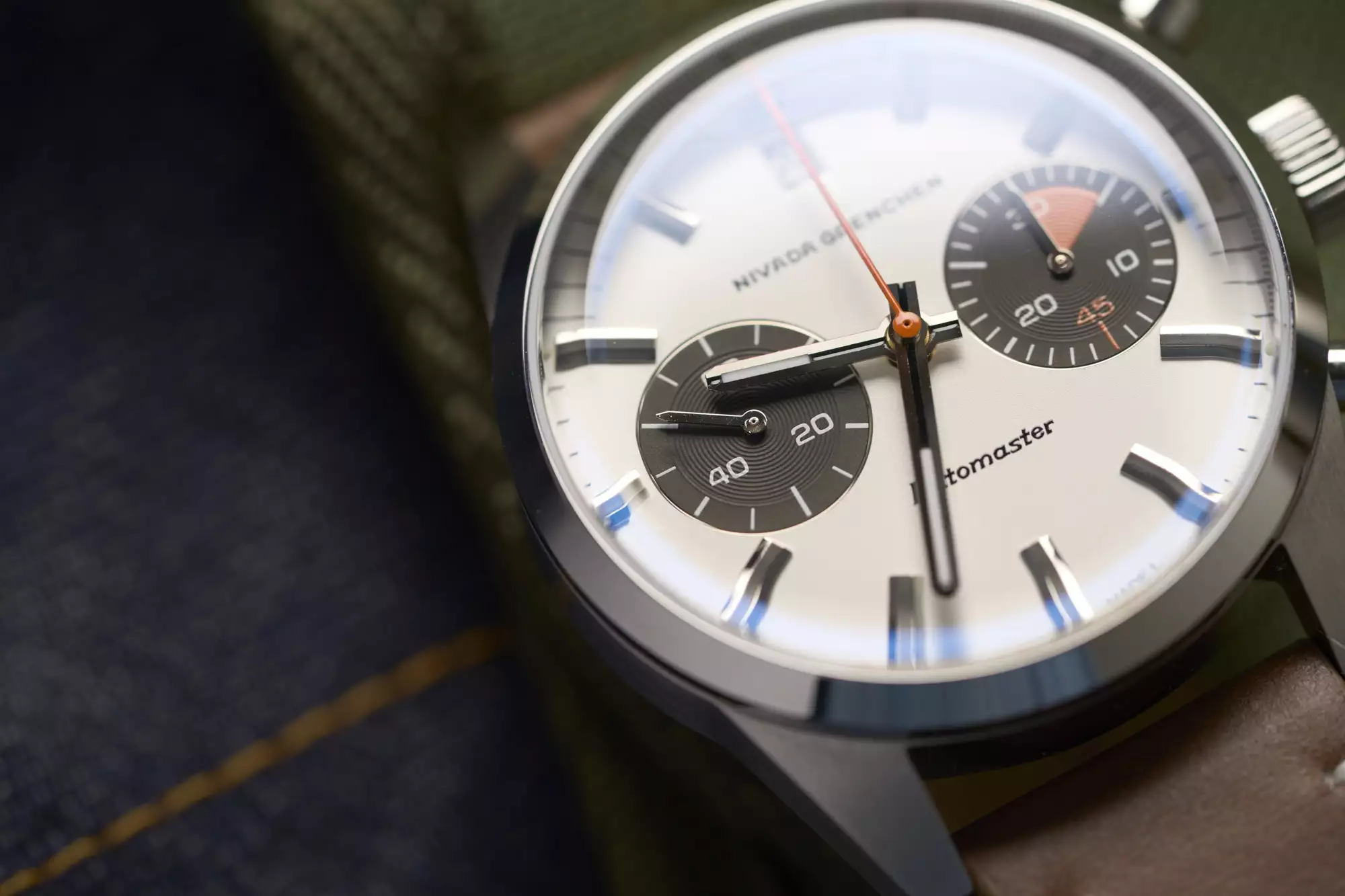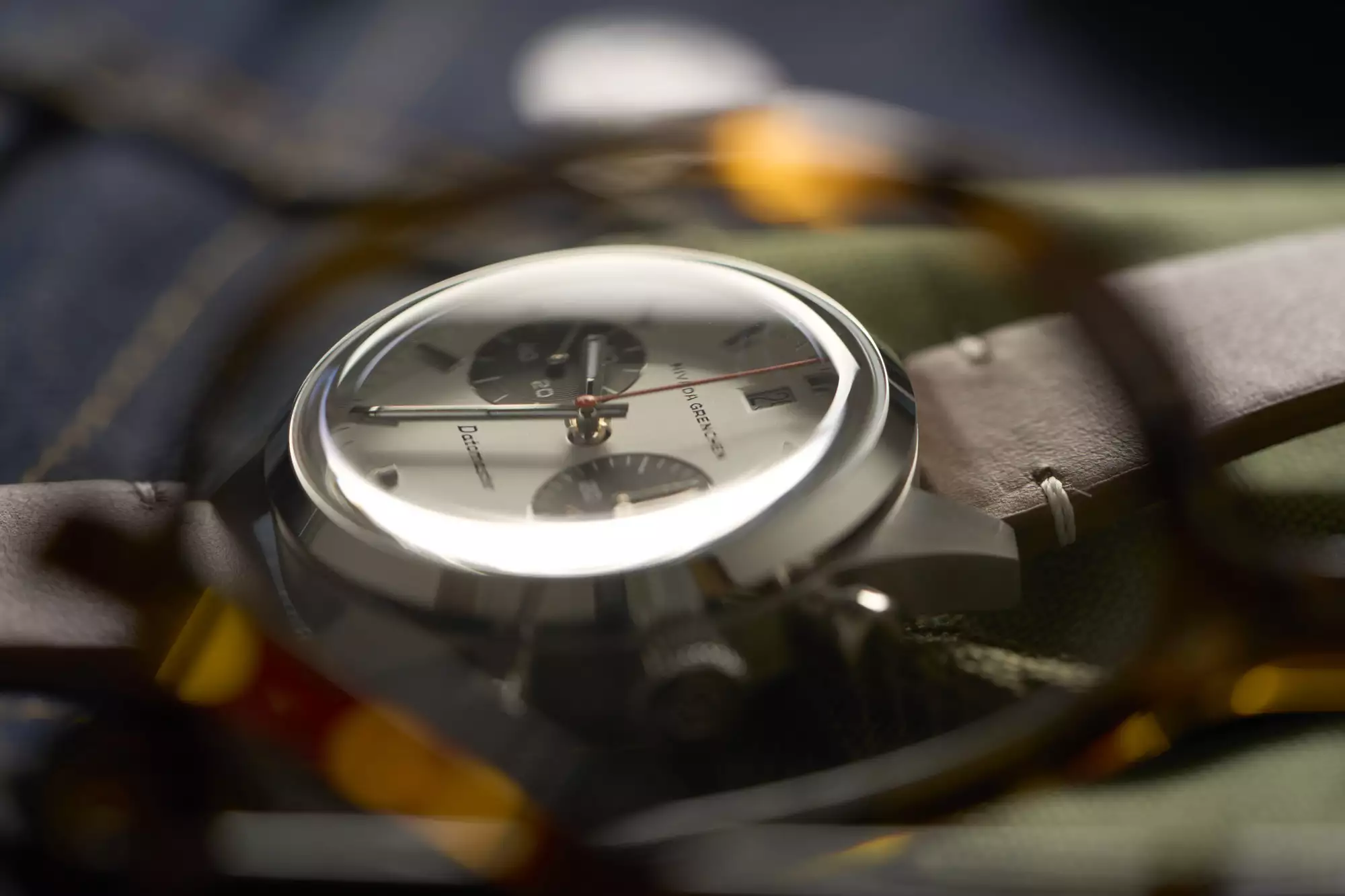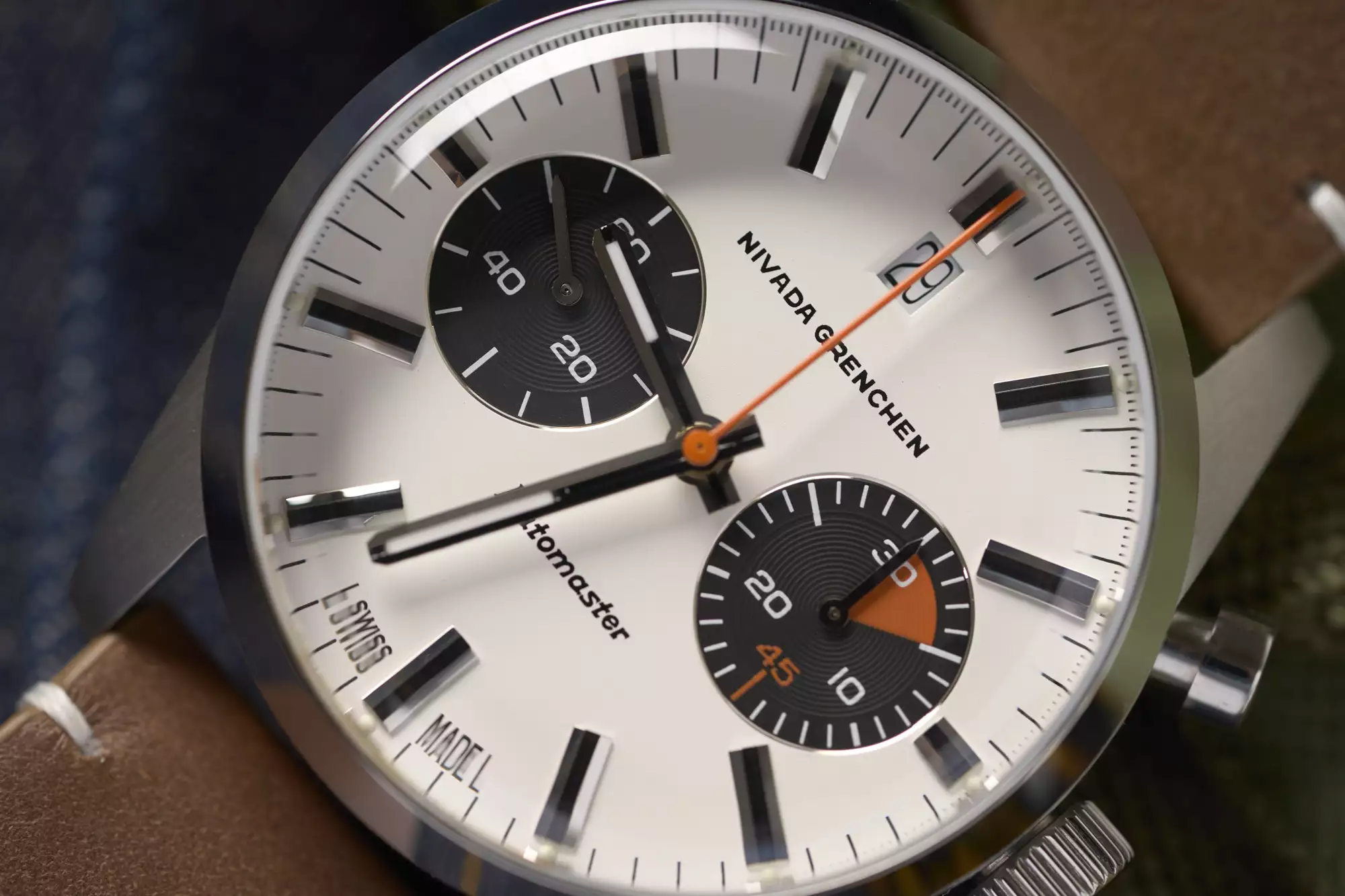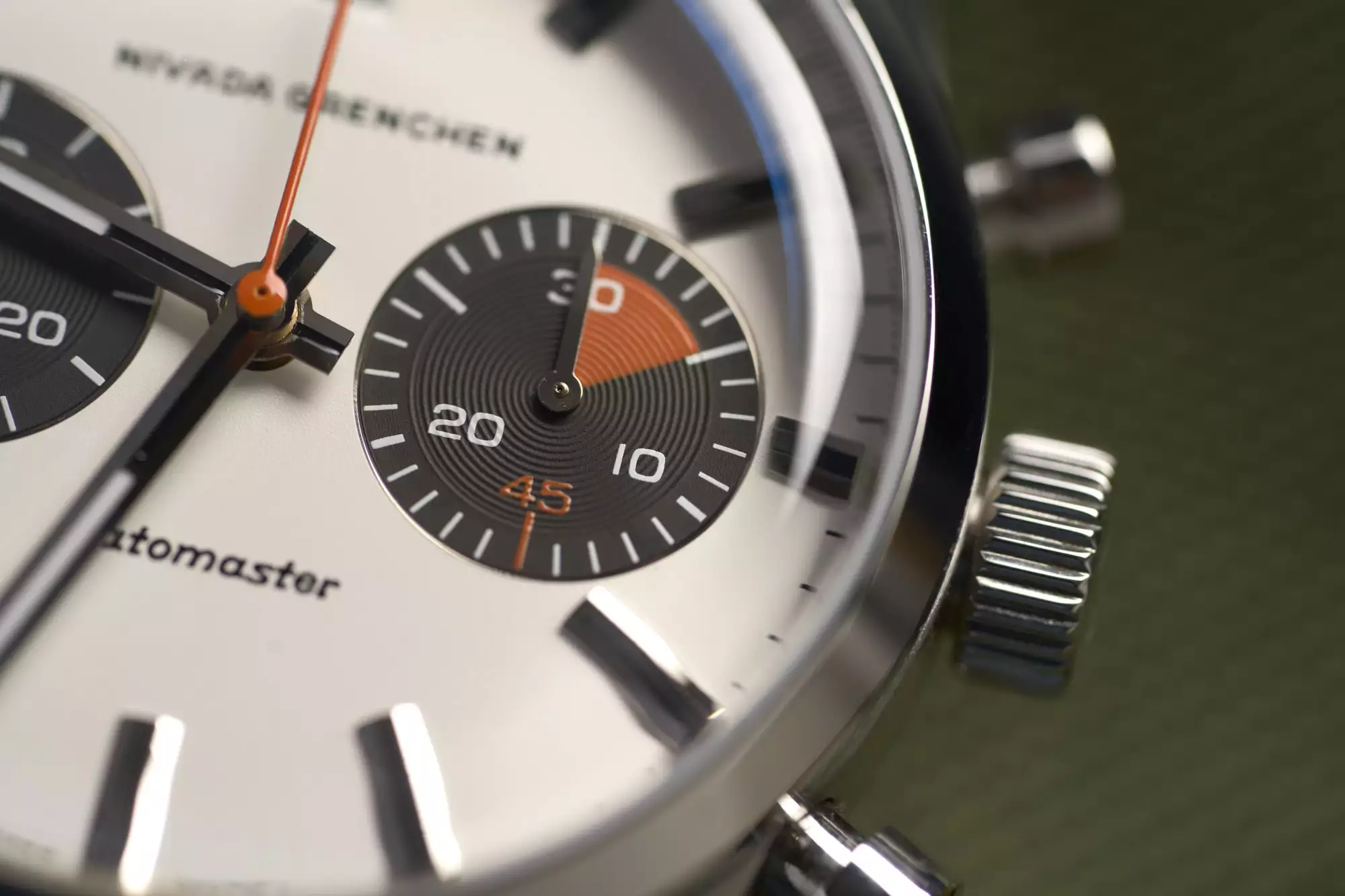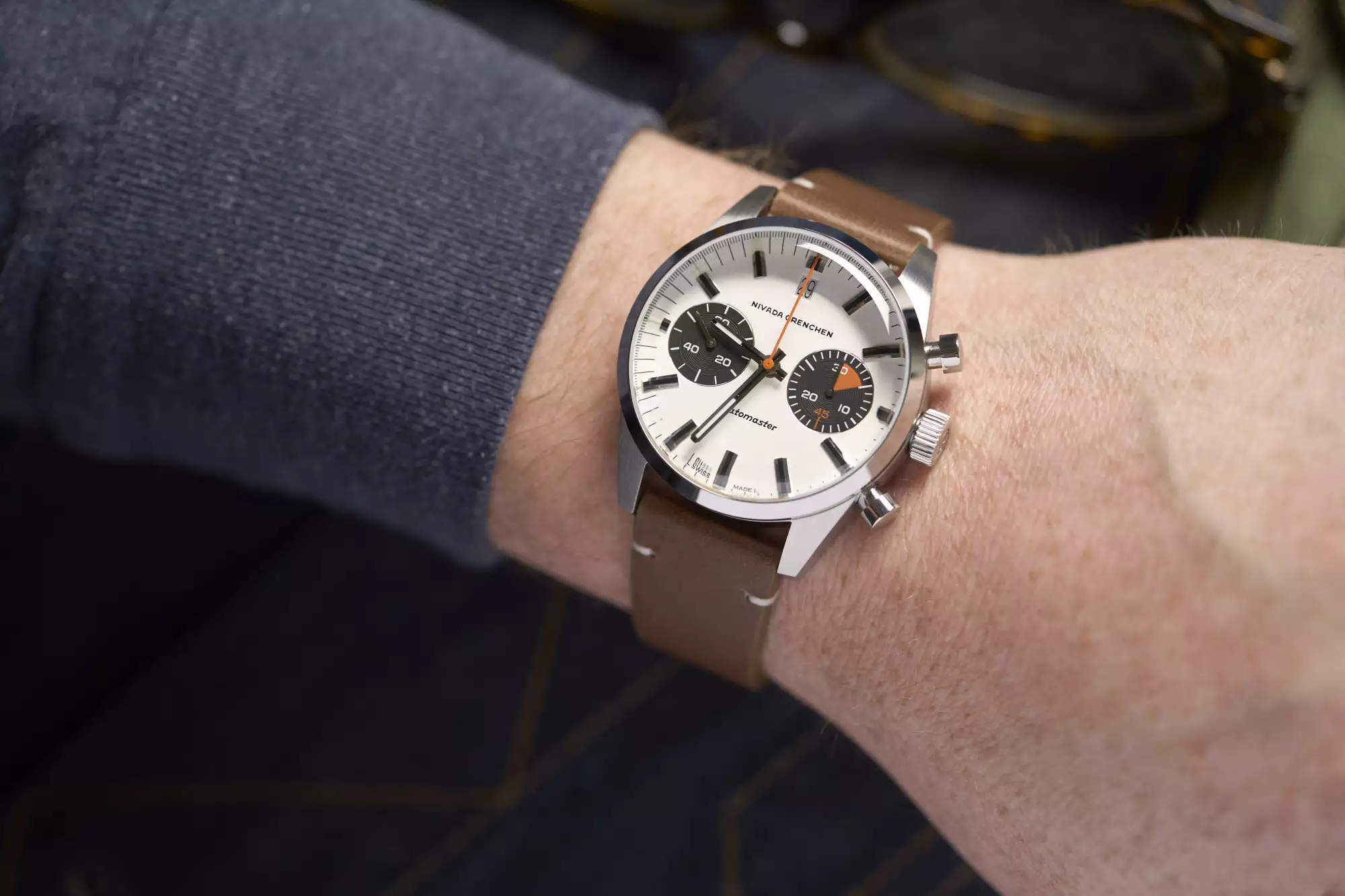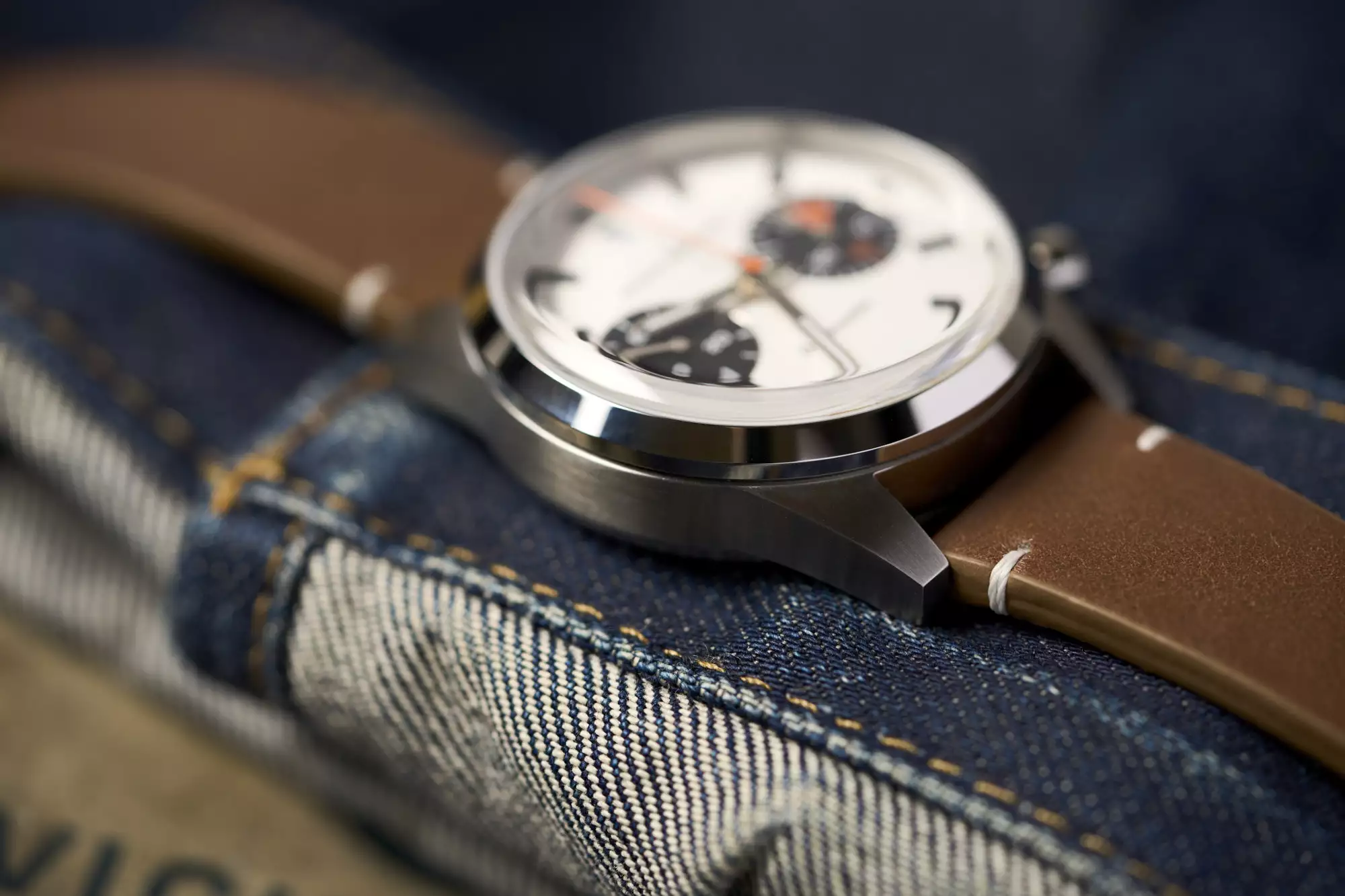It’s easy to nit pick every little detail with a watch. The dial has too much text, the date is in the wrong place, the case is too thick… there’s a million small things that get in the way of our own perfect design. Of course, those variables are a bit different for each of us, leaving watch designers with a rather impossible task of pleasing everyone, everywhere. To me, the most successful designs are unapologetic in their approach, they stick to their plan and execute to the initial vision laid forth by the brand, broader reception be damned. The Nivada Grenchen Chronomaster Aviator Sea Diver was a perfect example. It defied easy explanation, and it’s a watch that’s chock full of character as a result. The upcoming automatic Datomaster from the same brand, takes a very different approach, presenting a stripped down design that, at a glance, is left grasping for character. It’s there, but it’s not the type to wear it on its sleeve.
The Datomaster is, like all modern Nivada Grenchen releases, a resurrection of a sports watch from the ‘60s and ‘70s. It’s a simple steel chronograph that has been brought back with MecaQuartz movement, and as of this summer, will be welcoming a mechanical model that more closely resembles the original. In true Nivada Grenchen fashion, you’ll be able to tweak the details to your heart’s content, from hand shape and logo treatment, to hand-wound or automatic movement options.









 Featured Videos
Featured Videos





